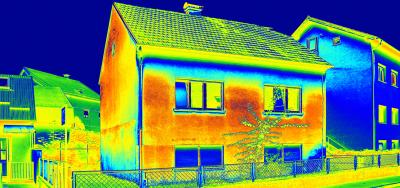What are local authority building control teams doing to address the climate emergency?
Over 61 million people live in the United Kingdom. Around 95 per cent of the population lives in areas where the local authorities – over 570 councils all together – have declared a climate emergency. It is hoped that by 2050, the result of these declarations and subsequent response plans in the UK alone will have reduced CO2 emissions by 2.5 billion tonnes.
This can’t come too soon if we are to slow the trend of rising global temperatures and protect our fragile natural ecosystems from irreversible damage.
The improvements we make in our built environment, including our homes, workplaces and leisure facilities, are going to play a huge and meaningful role in these changes.
The construction sector undoubtedly has a major responsibility to affect this change. Every building not only generates a large carbon footprint during its construction phase but is also responsible for generating a significant cumulative environmental impact over the course of its lifetime. It’s therefore vital that we also look at our existing homes and buildings to see how they can be made better thermally insulated and more energy efficient.
Of course the added bonus of this will be a reduction in energy bills.
Building Control will play a vital role in making these improvements a reality, perhaps more than any other local authority function, since their remit includes all buildings in all sectors when they are constructed, altered, converted, or renovated.
In December 2021, the Government confirmed the introduction of new Building Regulations in England which came into effect in June 2022, which are designed to reduce greenhouse gas emissions for residential properties by 31% when compared with current standards, and 27% for commercial properties. The Welsh Government has also introduced new Building Regulations which came into effect in November 2022, which are designed to reduce greenhouse gas emissions for residential properties by 37% when compared with current standards, and 28% for commercial properties.
The changes incorporate an ‘uplift’ to Approved Document L, which covers conservation of fuel and power; amendments to Approved Document F, which covers ventilation and indoor air quality; and the introduction of Approved Document O, which relates to overheating. Enforcement of these changes during the design and build phases by Building Control will be critical to ensure all projects comply with these tougher standards and deliver the energy and carbon savings we all need.
In 2025 we will see a further uplift. The Future Homes Standard in England and equivalent ‘Building Regulations Part L and F Review’ in Wales, which requires new-build homes to be “future-proofed with low-carbon heating and world-leading levels of energy efficiency” will be introduced, with some game-changing requirements.
Local authority Building Control welcomes these changes and the role it will play in monitoring and enforcing them, by educating, guiding and supporting designers, builders, and building owners to make sure they are aware of their responsibilities for compliance.
This article first appeared on LABC Front Door website.
Sign up to the building bulletin newsletter
Over 48,000 construction professionals have already signed up for the LABC Building Bulletin.
Join them and receive useful tips, practical technical information and industry news by email once every 6 weeks.
Subscribe to the Building Bulletin




Comments
Add new comment